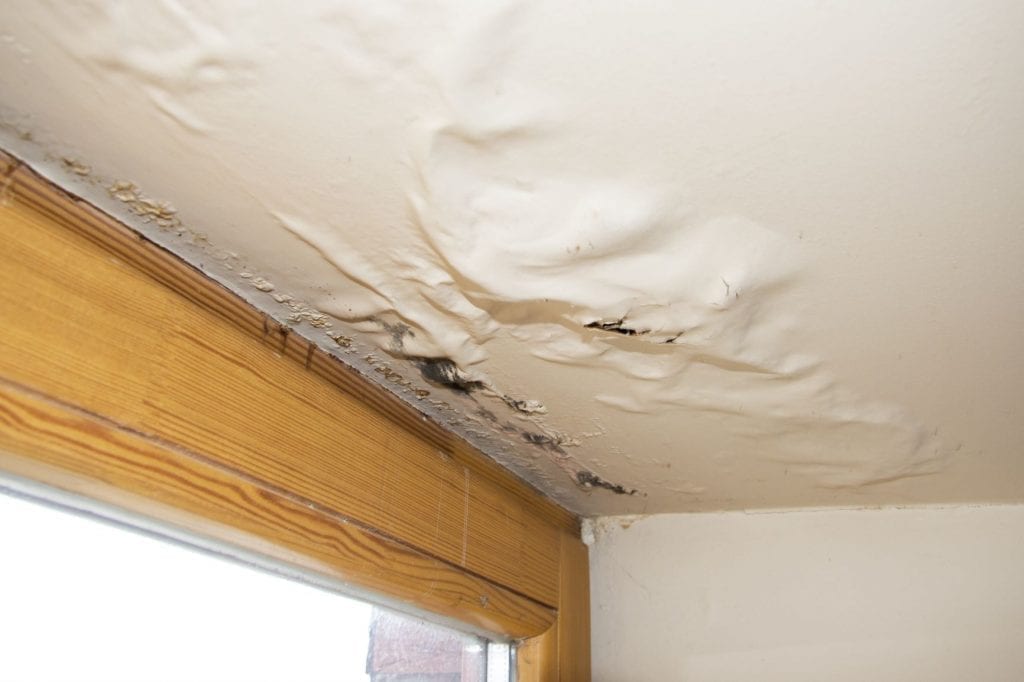Few household issues can send shivers down a homeowner’s spine as quickly as a leaking ceiling. The sound of water dripping, the sight of unsightly stains, and the fear of water damage can be overwhelming. But not all ceiling leaks are created equal. In this article, we will explore the question: Is a leaking ceiling an emergency? We’ll help you understand the severity of the situation and how to respond effectively.

Understanding the Severity of Ceiling Leaks
1. Minor Drips from Condensation
Not all moisture on your ceiling is a cause for panic. Sometimes, especially in humid climates, minor condensation can form on the ceiling’s surface. This can give the appearance of a leak, but it’s usually not a structural issue. You can address this by improving ventilation and insulation in your home.
2. Roof Leaks
Roof leaks are a common cause of ceiling leaks. The severity of a roof leak can range from minor to major:
- Minor Roof Leak: A minor roof leak, often caused by damaged shingles, may result in isolated ceiling stains or minor dripping during heavy rain. While not an emergency, it should be addressed promptly to prevent further damage.
- Major Roof Leak: A significant roof leak, such as one affecting a large area of your ceiling or causing substantial water flow, is more urgent. In this case, it’s advisable to place buckets to collect water and immediately contact a roofing professional.
3. Plumbing Leaks
Ceiling leaks due to plumbing issues are usually urgent. A burst or leaking pipe can quickly lead to severe water damage and should be addressed immediately. Turn off the water supply to the affected area and call a plumber to fix the issue.
4. HVAC System Condensation
Sometimes, leaks can result from condensation in your HVAC system. While not typically an emergency, these leaks should still be addressed to prevent mold growth or damage to your ceiling.
Immediate Steps When You Discover a Ceiling Leak
Regardless of the cause, when you discover a ceiling leak, there are immediate steps you should take:
- Locate the Source: Try to identify the source of the leak. Is it coming from the ceiling directly, or is water traveling along pipes or beams?
- Contain the Water: Place buckets, pots, or towels under the leak to prevent further damage or water from spreading to other areas.
- Turn Off Electricity: If the leak is severe and water is pooling near electrical fixtures or wiring, turn off the electricity in the affected area to avoid potential electrical hazards.
- Contact Professionals: If the leak is beyond a minor condensation issue, contact a professional, such as a plumber or roofer, depending on the suspected source of the leak.
Is It Covered by Insurance?
Whether your homeowner’s insurance covers a ceiling leak depends on the cause of the leak and the specifics of your policy. Generally, sudden and accidental leaks, like those caused by a burst pipe, are more likely to be covered. Gradual leaks or those resulting from lack of maintenance may not be covered.
Preventing Ceiling Leaks
The best way to deal with a leaking ceiling is to prevent it from happening in the first place. Here are some preventive measures:
- Regularly inspect your roof for damaged shingles and have them repaired promptly.
- Maintain your plumbing system and address any issues immediately.
- Ensure your HVAC system is well-maintained and not producing excessive condensation.
- Improve home ventilation and insulation to reduce condensation on your ceilings.
Read too: How To Dry Water Leak In Ceiling
Conclusion: Is It an Emergency?
In conclusion, the urgency of a leaking ceiling depends on the cause and severity of the leak. While minor condensation may not be an emergency, significant roof leaks, plumbing leaks, or HVAC leaks demand immediate attention to prevent further damage to your home. Quick action and professional assistance can help mitigate the situation and save you from costly repairs in the long run.